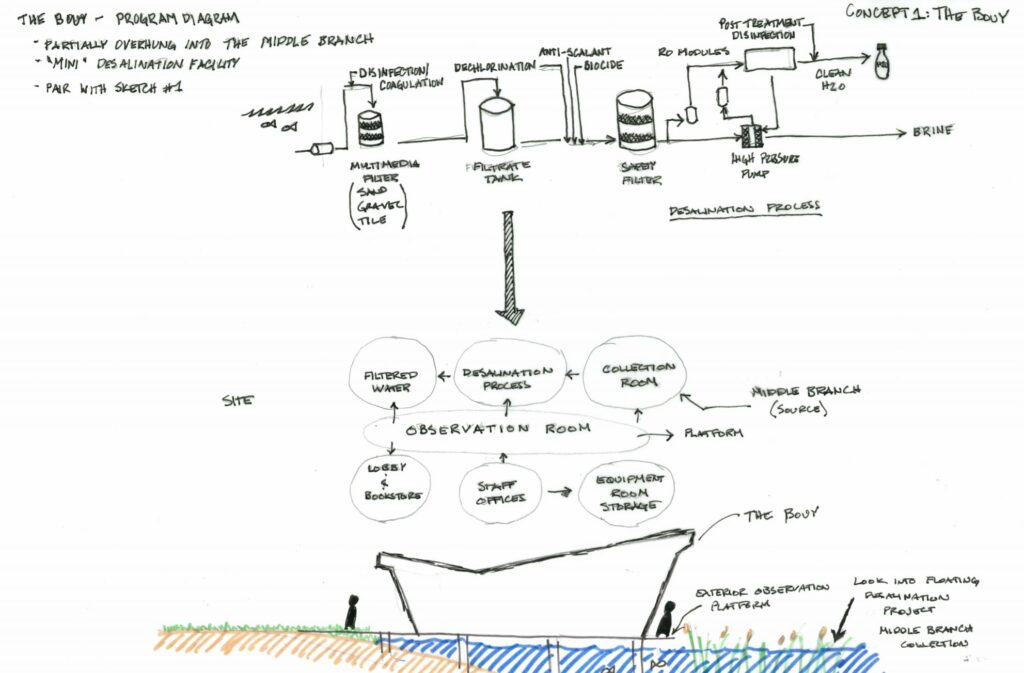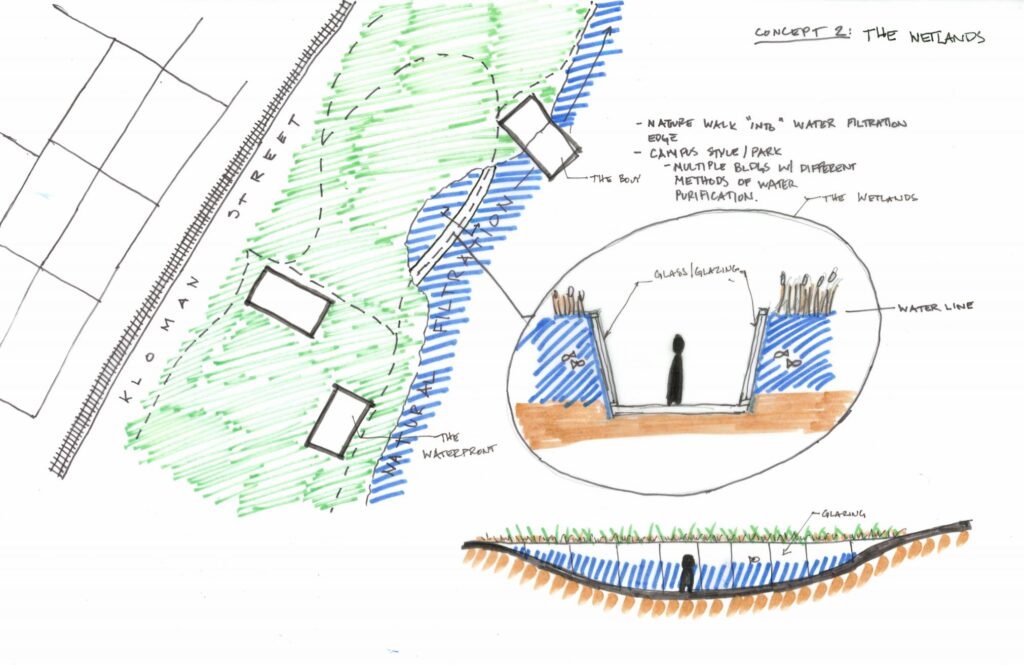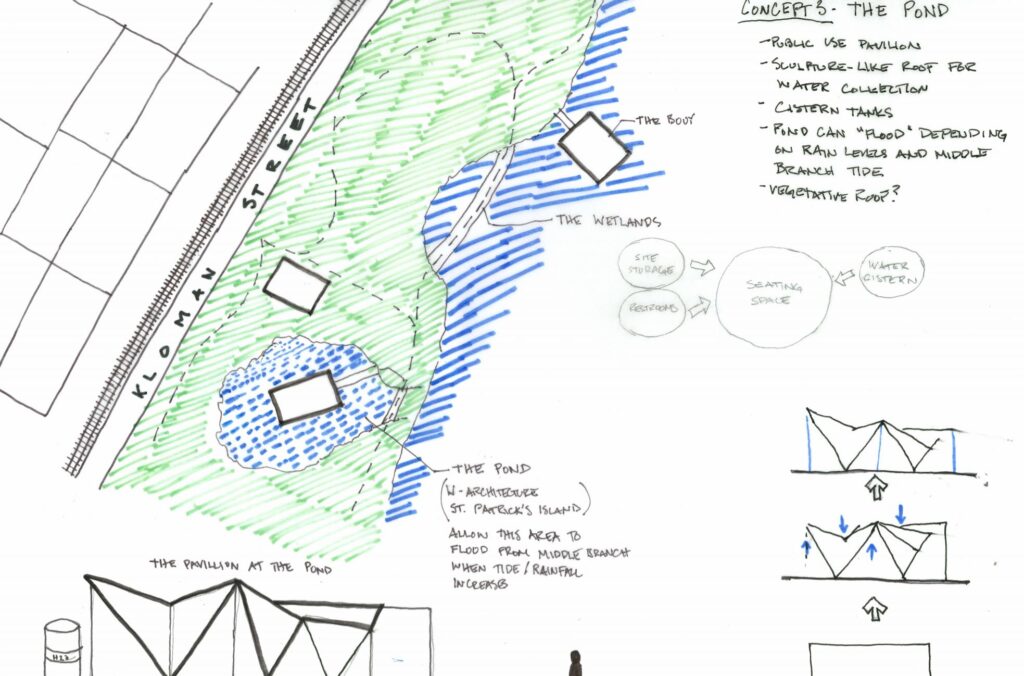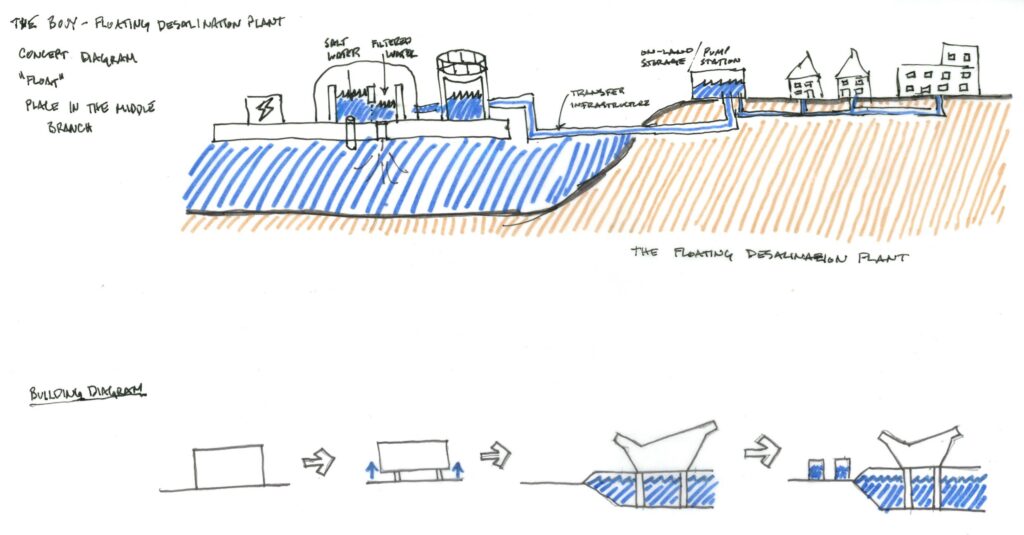The Wetlands by Alex Wong
The cities of today are reliant on fresh drinking water to accomplish many tasks throughout the day. Most take this for granted, however, there are places around the world that do not have access to potable water. On the surface, water is one of the most abundant resources on earth. Taking a deeper look, ninety-seven percent of that water is saline. Leaving three percent of a resource that covers most of the Earth’s surface as fresh or consumable for humans, plants, and animals. The limited percentage of water, compounded with urban development, leaves the natural water cycle strained. Impermeable surfaces overload our stormwater infrastructure, disrupting natural infiltration of water into the ground. Climate change has added another wrinkle to the water-related crisis. As the increasing frequency of storms create runoff and flooding in cities, along with those storms becoming more intense, this leaves cities and existing infrastructures overloaded. Creative, resilient solutions for water scarcity and mitigation of stormwater must be addressed within urban cities.
 Concept 1
Concept 1
 Concept 2
Concept 2
 Concept 3
Concept 3
 Building Diagram
Building Diagram
The instructor for the terminal project studio (ARCH.772 Architectural Design Six) was Ruth Connell A.I.A., Associate Professor. For information about this course or the project, please contact Ruth at ruth.connell@morgan.edu.


